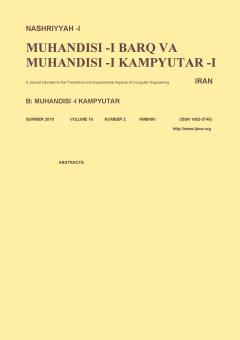تأثیر الگوی موضوعی رفتار جستجوی كاربران نوجوان بر پیشنهاد پرسوجو
الموضوعات : مهندسی برق و کامپیوتر
حیدر قاسمزاده
1
,
محمد قاسم زاده
2
![]() ,
عليمحمد زارع بيدكي
3
,
عليمحمد زارع بيدكي
3
1 - دانشگاه یزد
2 - مهندسی کامپیوتر
3 - دانشگاه يزد
الکلمات المفتاحية: الگوی موضوعیپیشنهاد پرسوجورفتار جستجوکاربر نوجوانلاگ جستجو,
ملخص المقالة :
کاربران نوجوان هنگام جستجوی موضوعهای مورد نظرشان، دایره لغات محدودی را در فرمولبندی پرسوجو به کار میبرند. مسئله مهم دیگر آن است که کاربران نوجوان غالباً بر روی اقلام اولیه ارائهشده در لیست نتایج جستجو کلیک میکنند. در این پژوهش برای ترمیم و جبران این ویژگیها، پیشنهاد میشود که الگوی موضوعی از روی رفتار کاربر نوجوان بر اساس جستجوهای قبلی کشف شوند و با تکیه بر الگوهای یافتشده، پرسوجوی مناسب استخراج و به کاربر نوجوان پیشنهاد گردد. در روش پیشنهادی، الگوهای موضوعی بر اساس ویژگی محبوبیت كلیكها و مرتبطترین موضوعها از روی لاگهای جستجو که عموماً حجیم هستند استخراج میگردند. در ادامه با استفاده از كلاسهبندی دودویی، نزدیکترین پرسوجو به پرسوجوی مورد نظر كاربر نوجوان مشخص میشود. در نتیجه با فیلترنمودن نویز ناوبری موضوعی بر اساس استخراج الگوهای موضوعی کلیکهای کاربران نوجوان یک مدل کاربر با دقت بالاتری برای پیشنهاد پرسوجو حاصل میگردد. روش پیشنهادی با استفاده از ابزارهای Alteryx و weka پیادهسازی و عملکرد آن بر روی لاگ جستجوی AOL که شامل حدود 20 ميليون نمونه تراکنش جستجو مربوط به 650 هزار کاربر میباشد ارزیابی گردید. نتایج آزمایشها نشان میدهند که پرسوجوهای ارائهشده توسط سیستم پیشنهادی به پرسوجوی مورد نظر کاربر نوجوان نزدیکتر است و به تبع آن موجب بهبود دستیابی به نتایج مرتبط میگردد.


